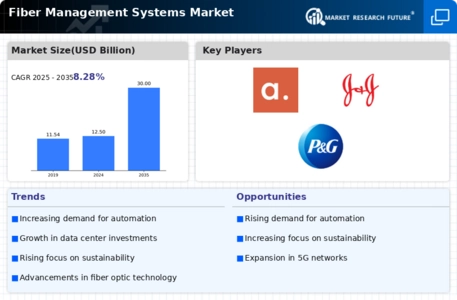Market Share
Fiber Management Systems Market Share Analysis
In the dynamic landscape of the Fiber Management Systems market, companies employ various market share positioning strategies to gain a competitive edge and establish a strong presence. One prevalent strategy is differentiation through product innovation. Companies invest in research and development to introduce advanced and feature-rich Fiber Management Systems that cater to the evolving needs of customers. By offering unique and technologically superior solutions, companies can distinguish themselves in the market, attracting a broader customer base and securing a higher market share.
Strategic partnerships and collaborations are another key aspect of market share positioning in the Fiber Management Systems market. Companies often form alliances with other organizations, such as technology providers, telecommunications companies, or industry-specific partners, to enhance their product offerings and market reach. These collaborations enable companies to leverage complementary strengths, share resources, and jointly develop innovative solutions. Through strategic partnerships, companies can access new markets, tap into diverse customer segments, and strengthen their overall market position.
Mergers and acquisitions play a pivotal role in shaping market share within the Fiber Management Systems industry. By acquiring or merging with other companies, organizations can consolidate their market presence, gain access to new technologies, and expand their customer base. This strategy is particularly effective in achieving economies of scale, reducing competition, and achieving a dominant position in the market. Mergers and acquisitions also provide companies with the opportunity to streamline operations, optimize resources, and enhance overall efficiency.
Price competitiveness is a fundamental strategy employed by companies aiming to capture a significant market share in the Fiber Management Systems market. Offering competitive pricing structures, discounts, and bundled services can attract cost-conscious customers and position a company as a preferred choice in the market. Price positioning is a delicate balance, as companies must ensure that competitive pricing does not compromise product quality or erode profit margins. However, when executed effectively, a competitive pricing strategy can help companies gain market share by appealing to a broader customer base.
Geographic expansion is a strategy employed to enhance market share by reaching new and untapped markets. Companies may focus on expanding their presence in emerging markets where there is a growing demand for fiber optic infrastructure. By establishing a strong foothold in different regions, companies can diversify their customer base, reduce dependence on specific markets, and capitalize on global opportunities. Geographic expansion also allows companies to adapt their products and services to meet the specific needs and preferences of different regions.
Customer-centric strategies are crucial for market share positioning in the Fiber Management Systems market. Building and maintaining strong relationships with customers through excellent customer service, responsive support, and tailored solutions can lead to customer loyalty and advocacy. Satisfied customers are more likely to stick with a brand, recommend it to others, and contribute to positive word-of-mouth marketing. Consequently, a customer-centric approach not only helps in retaining existing market share but also in attracting new customers through positive referrals.






Leave a Comment